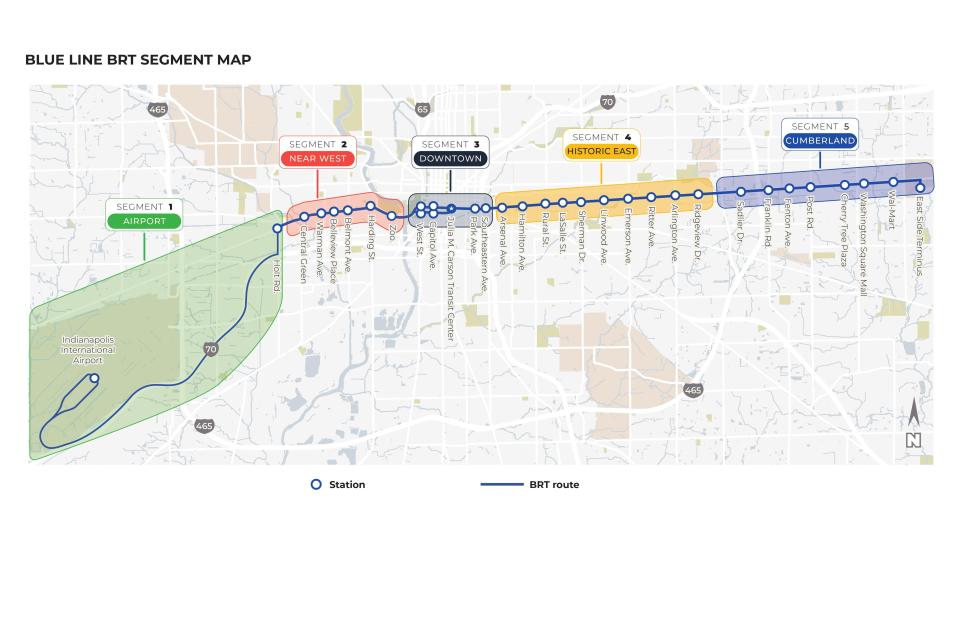IndyGo's Blue Line is full steam ahead. What you need to know.
After ballooning costs put the IndyGo Blue Line project on hold last fall, the transit agency said the project is moving forward with the design phase.
"There are still details to work out," IndyGo spokesperson Carrie Black told IndyStar, "but with our project partners’ support we have reduced the project cost, identified additional funding and mitigated some critical risks."
Here's what you need to know.
Where will the Blue Line run?
The Blue Line's planned route will bring bus rapid transit services from past Cumberland, through the east side, downtown, the near west side and end at the airport.

To cut costs, IndyGo decided last fall to divert the bus rapid transit route to I-70 between Holt Road and the airport, rather than using Washington Street, which means no Blue Line stops west of Holt Road, unlike the original design plan back in 2021.
When will the Blue Line open?
Design is expected to be finished in early 2024.
Construction is estimated to start between late 2024 and early 2025.
The Blue Line is expected to open in 2027.
How did the Blue Line get revived?
IndyGo brought costs down to $370 million, still higher than the 2019 estimate of $220 million, but much lower than last fall.
Last August, with 60% of the design completed, IndyGo received an estimate that the Blue Line would cost $520 million, well beyond what was viable and too expensive to qualify for the key federal grant IndyGo planned to use, which had a cap of $400 million. The project was put on hold.
How will the Blue Line be funded?
With costs down, IndyGo will apply for a $150 million Small Starts grant from the Federal Transit Administration.
Local money from IndyGo, Indianapolis and Citizens Energy Group will contribute about $180 million to fund the Blue Line, but the breakdown of how much each group will contribute is still being worked out, Black said.
Federal money from the Indianapolis Metropolitan Planning Organization also is being used for the Blue Line.
And the agency is working to address the remaining funding gaps.
How did IndyGo bring Blue Line costs down?
IndyGo modified the buses being used for the Blue Line from all-electric buses to diesel hybrid buses, significantly reducing the number of buses required to operate the line and reduced infrastructure needs at IndyGo facilities and at the end of the line.
Switching to hybrid buses still lowers the carbon footprint of the IndyGo fleet while having significant cost savings, Black said.
But, she added, the agency is looking for opportunities down the line to replace the hybrid buses with zero emission vehicles as the buses are retired.
Secondly, the Blue Line drainage design has been modified by working with the city and Citizens Energy Group. They figured out which existing drainage systems could be used as part of the project.
Last, the Indianapolis International Airport has committed to leading construction for the Blue Line's westernmost stop at the airport.
Contact IndyStar reporter Ko Lyn Cheang at kcheang@indystar.com or 317-903-7071. Follow her on Twitter: @kolyn_cheang.
This article originally appeared on Indianapolis Star: IndyGo's Blue Line is moving forward. What you need to know.

